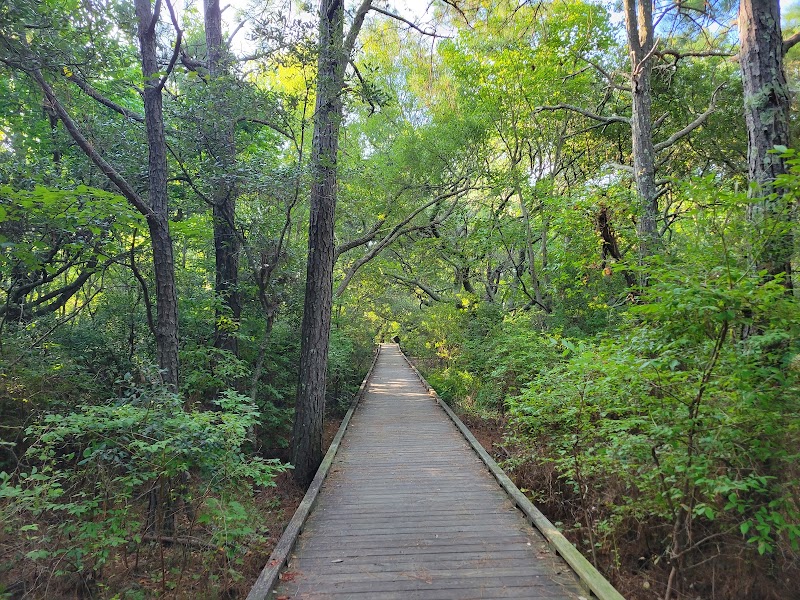
Currituck Banks Reserve, National Estuarine Research Reserve Adventures
Currituck Banks Reserve is a coastal ecosystem rich in biodiversity and offers a unique experience for nature enthusiasts and outdoor adventurers alike.
Popular Activities
Capturing the Wild Heart: A Photography Adventure at Currituck Banks Reserve
Venturing into the Currituck Banks Reserve is akin to stepping into a living canvas, a vivid landscape painted by the untamed artistry of nature itself. This protected corner of North Carolina offers photographers both a sanctuary and a playground, where the nuanced dance of light and shadow reveals the quiet splendor of its coastal ecosystem. Rugged and raw, it beckons adventurers with a promise of pristine beauty not yet touched by the hand of modernity.
As you cross the threshold into this wild refuge, your senses will be immediately attuned to the symphony of natural cues that define the Reserve. The air carries the briny scent of the Atlantic, mingling with the earthy undertones of the maritime forest that sprawls like an ancient protector of secrets waiting to be discovered. Compact trails wind through the thickets of live oaks and red cedars, offering secluded vantages where one can frame the interplay of sunlight filtering through dense canopies.
Journey towards the edge, where the forest greets the sands, and the photographic possibilities are as vast as the horizon itself. Here, the Atlantic marshes stretch infinitely, an expanse of shimmering greens and silvers, their serenity a stark contrast to the crashing waves beyond. Photographers will find the Reserve's ever-changing mood a constant source of inspiration—morning mists clinging to grasses, surf crashing rhythmically under the influence of shifting tides, and sunsets that paint the sky with strokes of amber and crimson.
While Currituck Banks offers immense opportunities to capture the raw power and subtle grace of nature, practical preparation enhances the experience manifold. It’s essential to equip yourself with a wide-angle lens to capture sweeping vistas, while a telephoto lens will be invaluable for bringing distant wildlife into clear focus. As you traverse the landscape, keep an eye trained for marine and forest dwellers alike—the Reserve is a habitat for wild horses, elusive shorebirds, and a rich array of coastal flora.
Navigating the Reserve requires attentive readiness: sturdy footwear to tackle uneven trails and sandy paths, along with adequate hydration to counter the coastal climate’s demands. The Reserve unfolds its secrets best in the quieter hours, early morning or late afternoon, when light shifts dramatically, creating optimal conditions for photography. Here, timing is not just a guideline but a crucial element of capturing the Reserve's essence.
Whether capturing the golden hues of dawn kissing the ocean or the intricate textures within the forest, each photograph tells a story unique to the eye behind the lens. Each step through the Reserve is a dialogue with nature, a chance to witness and document a world where wild horses roam free and ocean breezes sculpt ever-shifting dunes.
To embrace the Reserve is to partake in an adventure of exploration and observation. The sights you capture can transport those who see them to the heart of this amazing landscape, an invitation to step away from the rush of everyday life into a realm where natural beauty thrives in its untouched form. Prepare your gear, harness the light, and embark on a journey to chronicle the soul of Currituck Banks Reserve—one image and one moment at a time.
Plan Your Visit
Everything you need to know to prepare for an unforgettable trip to Currituck Banks Reserve, National Estuarine Research Reserve.
Entrance Requirements
Free access
Best Time to Visit
Spring and fall are ideal, offering mild weather and active wildlife.
Visitor Information
No formal visitor center, but information is available at the Corolla tourism center nearby.
Getting There
Accessible via NC-12, no 4WD required.
Weather & Climate
Mild winters and hot, humid summers. Spring and fall offer cooler, more comfortable conditions with lower humidity and vibrant foliage.
Conservation Efforts
Rising sea levels and coastal erosion pose threats to the habitat. Conservation efforts focus on studying and mitigating these impacts.
Camping in Currituck Banks Reserve, National Estuarine Research Reserve
Find the perfect spot to stay overnight and immerse yourself in the details.
Top Trails
Currituck Banks Boardwalk Trail
Offers an accessible route through the wetland and woodland habitats to a scenic viewpoint over the sound.
Trailblazer Tips
Visit early in the morning for the best bird watching experience.
Be mindful of ticks and mosquitoes, especially in the warmer months.
Parking is available at the trailhead, but spaces can fill up during peak times.
Bring binoculars for an enhanced experience of the diverse bird species.
